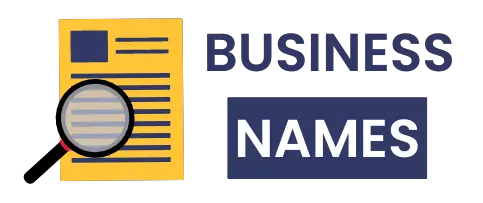Drowning in credit card payments that barely touch your balance? Every month, hundreds of dollars vanish into interest charges while your debt stays stubbornly high.
Traditional debt payoff methods leave you grinding for years, watching compound interest devour your progress like a financial black hole.
But what if you could slash those brutal interest rates to zero and pay off debt in half the time? The Debt Lasso Method does exactly that.
This proven strategy helped real people eliminate over $50,000 in credit card debt in under three years by “lassoing” high-interest balances into low-rate accounts and maintaining aggressive payments.
Ready to break free from the debt trap once and for all?
The “Debt Lasso” Method: How to Round Up and Pay Off Your High-Interest Debt for Good

When credit card balances consume your monthly budget without shrinking, the real culprit is compound interest working against you.
Cards with 20-30% annual rates can keep borrowers trapped in endless payment cycles, where most of each payment feeds interest charges instead of reducing what you owe.
Standard debt reduction approaches frequently fall short because they ignore the fundamental issue: astronomical interest rates that grow faster than typical payments can reduce them.
This innovative strategy reverses the dynamic by making interest rate elimination the top priority rather than focusing on balance amounts or motivational psychology.
The method gained recognition through the efforts of debt elimination experts David Auten and John Schneider, who confronted their financial challenges head-on.
Staring at more than $51,000 in high-interest credit card debt that conventional minimum payments would have stretched across nearly ten years, they revolutionized their approach through calculated balance consolidation and unwavering payment discipline.
Their systematic execution shortened the elimination timeline to less than three years, demonstrating how targeted interest reduction can transform seemingly impossible debt situations into manageable victories.
The strategy functions by consolidating multiple high-rate debts into a single account, offering substantially lower interest rates.
Moving a $5,000 balance from a 24% card to a promotional 0% rate means your entire payment directly reduces what you owe rather than enriching credit card companies.
Seeing balances shrink rapidly without interest interference generates powerful momentum that fuels continued success throughout the elimination process.
Step-by-Step Guide to the Debt Lasso Method
Successfully implementing this strategy demands methodical preparation and consistent follow-through across six essential stages. Each phase strengthens the foundation for the next, building a complete debt elimination system.
Step 1: List and Understand All Your Debts

Start by documenting every high-interest obligation in your financial life. Record credit cards, retail store cards, personal loans, and any revolving credit charging above 15% annually.
For each account, note the outstanding balance, interest rate, required monthly payment, and payment due date.
This complete picture exposes the actual magnitude of your debt challenge and identifies which accounts demand immediate action.
Total up all required monthly payments across every account. This sum establishes your payment baseline—the minimum amount you must continue paying after consolidating balances.
Most people are surprised to learn they’re already paying $300-500 monthly in required payments, with the majority disappearing into interest rather than debt reduction.
Build a tracking system using spreadsheet software or debt management apps to maintain this information. Arrange debts from the highest to lowest interest rates to see which accounts cost you the most money.
This analysis frequently reveals disturbing realities about annual interest expenses—often $2,000-4,000 yearly on moderate debt amounts.
Difficulty Level: 3/10
Step 2: Reduce Interest Rates Through Negotiation and Balance Transfers

Call each credit card company requesting interest rate decreases before exploring balance transfer options. Present your situation clearly and highlight consistent payment history if applicable.
Credit card companies frequently agree to reduce rates by 2-5 percentage points for customers who simply ask, particularly those experiencing financial difficulties.
One phone conversation can eliminate hundreds in annual interest without requiring new credit applications.
Investigate 0% promotional APR balance transfer cards offering 12-21 month introductory periods.
Prioritize offers featuring minimal or zero balance transfer fees, although paying 3% upfront to eliminate 20%+ ongoing interest typically makes economic sense.
Evaluate credit limits, promotional durations, and standard rates after promotions expire when comparing options. Established banks and credit unions frequently extend the most attractive terms to creditworthy applicants.
Submit applications for cards capable of handling your complete debt amount, but resist applying for several cards simultaneously.
Every application generates a hard credit inquiry that temporarily damages your credit score. Allow 2-3 months between applications when multiple cards are necessary for large debt loads.
Explore personal loans from credit unions as backup options—they often provide fixed rates under 10% for qualified members.
Difficulty Level: 6/10
Step 3: Transfer Balances and Consolidate

Process balance transfers systematically, beginning with your highest-rate debts. Most balance transfer cards permit balance moves during application or within 60-90 days after account approval.
Submit transfer requests for amounts slightly under your credit limits to prevent over-limit charges and ensure successful completion. Transfer fees generally cost 3-5% of the moved balances.
Watch transfer completion timeframes, which typically require 7-14 business days to finalize. Keep making required payments on original accounts until transfers are verified complete to prevent late charges or interest penalties.
After transfers finish, confirm original account balances show zero and promotional rates are activated on destination accounts. Schedule calendar alerts 2-3 months before promotional periods expire.
Maintain original credit card accounts in active status, but physically remove cards from your possession to prevent impulsive spending.
Closing established accounts can damage your credit utilization calculations and eliminate valuable credit history. Instead, secure cards safely and establish small automatic payments like subscription services to maintain account activity.
This preserves your credit profile while removing temptation for additional borrowing.
Difficulty Level: 5/10
Step 4: Commit to Paying the Same Total Amount (Or More)

Continue your original combined monthly payment total despite significantly reduced minimum requirements after balance consolidation.
When you previously paid $400 monthly across multiple cards, maintain that $400 monthly commitment toward consolidated balances.
This ensures nearly every dollar above new minimum requirements directly reduces principal debt without interest interference.
The mental challenge involves avoiding payment reduction temptation when the minimum requirements drop dramatically. A $5,000 balance requiring $150 monthly at 24% APR might need only $25 monthly at 0% APR.
Paying just the minimum would stretch elimination beyond 16 years even without interest charges. Continuing the $150 payment eliminates the balance within 33 months.
Explore payment increases when budget allows, directing tax refunds, bonuses, or other windfalls toward debt elimination.
Every extra dollar during promotional periods delivers maximum effectiveness since interest doesn’t diminish its impact. Monitor monthly progress to witness how rapidly balances shrink when interest stops consuming payment portions.
Difficulty Level: 7/10
Step 5: Focus Payments Strategically and Avoid New Debt

Implement debt avalanche tactics for any remaining high-rate debt after balance transfers. Channel all surplus payments toward the highest-rate remaining debt while maintaining minimums elsewhere.
With multiple 0% promotional balances, prioritize extra payments on accounts with the shortest promotional periods to ensure elimination before rate increases.
Establish rigid spending boundaries to prevent new debt during this intensive elimination phase.
Remove credit cards from wallets, delete saved payment information from online stores, and institute 24-hour cooling-off periods for discretionary purchases exceeding $100. Use cash or debit cards exclusively to eliminate credit spending possibilities.
Build support systems reinforcing your debt avoidance commitment. Share objectives with trustworthy friends or family members who can offer encouragement and gentle accountability.
Utilize apps that block shopping websites or send alerts when approaching budget thresholds. Short-term convenience sacrifices yield substantial rewards through accelerated debt freedom.
Difficulty Level: 8/10
Step 6: Automate Payments, Track Progress, and Adjust as Needed

Establish automatic payments covering all minimum amounts plus additional principal payments to eliminate missed payment or late fee risks.
Schedule payments 2-3 days before due dates to accommodate processing delays. Most financial institutions offer complimentary automatic payment services with customizable amounts and timing.
Monitor debt reduction advancement monthly through spreadsheets, applications, or simple written records. Calculate the eliminated principal amounts and saved interest costs compared to the original payment projections.
Visual progress documentation sustains motivation during challenging periods and reinforces strategy commitment.
Develop backup strategies for promotional period conclusions. Research replacement balance transfer offers 60-90 days before current promotions expire.
When balances remain after promotional periods, fresh 0% offers can extend interest-free timeframes.
Alternatively, negotiate with existing creditors for sustained reduced rates based on improved payment performance and decreased balances.
Difficulty Level: 5/10
Advantages of the Debt Lasso Method

This strategy produces quantifiable benefits that conventional debt repayment approaches frequently cannot achieve:
- Substantial Interest Elimination: Moving $10,000 from 22% APR cards to 0% promotional rates eliminates roughly $2,200 in annual interest expenses
- Compressed Elimination Timeframe: Debts requiring 8-12 years with minimum payments can be cleared in 18-24 months through this approach
- Streamlined Payment Administration: Consolidating numerous payments into one or two accounts minimizes administrative complexity and prevents missed payment risks
- Enhanced Monthly Cash Flow: Reduced minimum requirements, release funds for aggressive principal attacks or emergency savings building
- Sustained Motivational Drive: Observing balances decrease rapidly without interest erosion generates psychological momentum supporting long-term dedication
- Credit Profile Enhancement: Consistent payment performance and reduced utilization percentages often strengthen credit scores over time
Risks and Pitfalls to Watch

Recognizing potential obstacles enables successful strategy navigation:
- Promotional Rate Termination: Interest charges can surge to 20-30% when promotional periods conclude, potentially worsening situations compared to the original debts
- Transfer Fee Expenses: Upfront costs of 3-5% increase total debt amounts, though fees typically justify themselves through interest savings
- Credit Rating Effects: Multiple credit applications generate temporary score decreases through hard inquiries, possibly affecting future borrowing opportunities
- Behavioral Discipline Demands: Success requires complete avoidance of new debt accumulation, necessitating substantial lifestyle modifications for many individuals
- Credit Availability Limitations: Available transfer capacities may not accommodate complete debt loads, requiring multiple cards or alternative approaches
- Approval Qualification Barriers: Borrowers with damaged credit scores may not qualify for optimal promotional terms, restricting strategy viability
Alternatives When You Can’t Use the Debt Lasso Method
| Alternative Method | How It Works | Requires New Credit? | Focus | Interest Reduction | Payment Strategy | Difficulty Level (avg.) |
|---|---|---|---|---|---|---|
| Debt Avalanche | Pay off the smallest balance debts first for momentum | No | Highest interest debt first | No balance transfers; interest not lowered | Pay minimums on all debts; apply extra to the highest-interest debt | 6/10 |
| Debt Snowball | Collaborate with a nonprofit to discuss rates and combine services. | No | Smallest balance debt first | No | Build psychological wins first | 5/10 |
| Debt Management Plan (DMP) | Work with nonprofit agency to negotiate rates and consolidate | No | Lower negotiated rates | Yes, but via counseling organizations | Structured payment plan | Attack the highest rate debt first |

